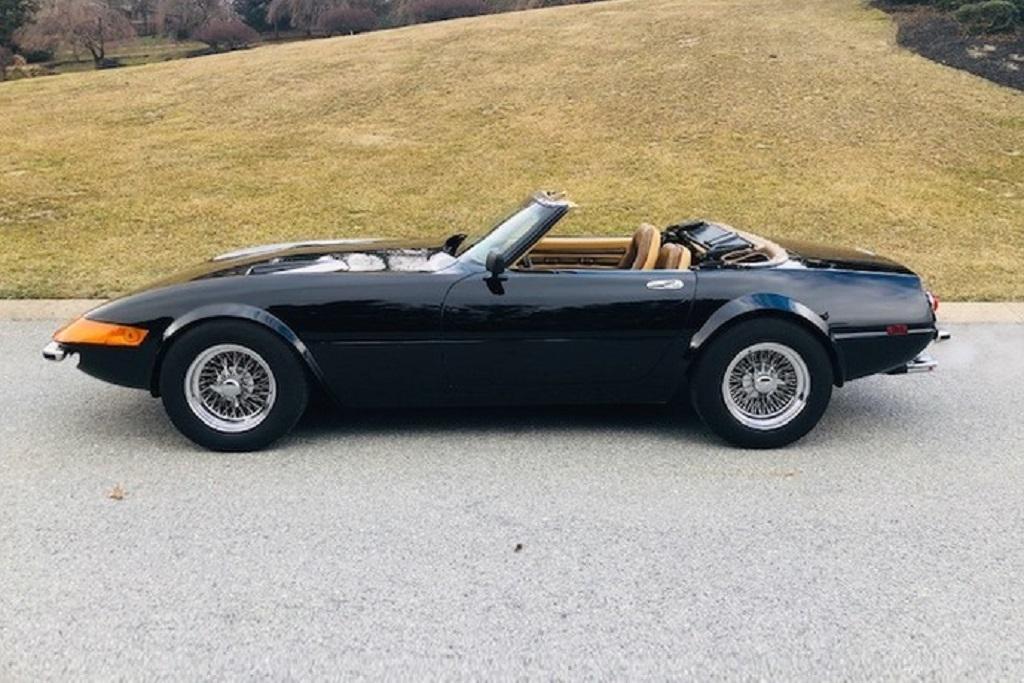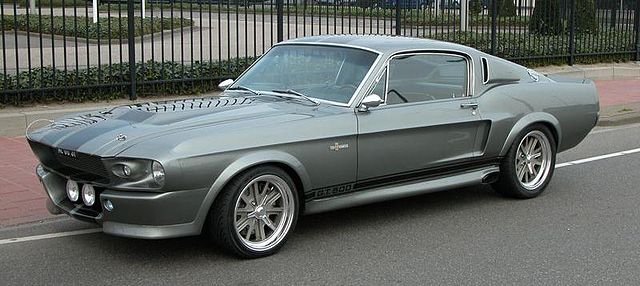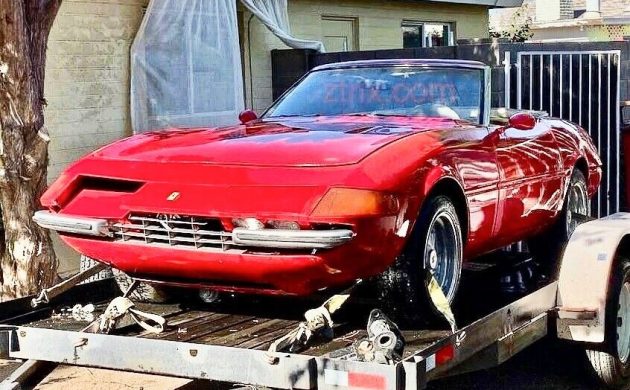Appraising Clones. What's The right approach?
With the advent of the collector muscle car hobby in the late 80's and early 90's, the growth of the clone industry has exploded exponentially. It's serious business also, and a great deal of money changes hands. It's become an investment as much as a hobby if not more.
The hot rods of the 40's and 50's were definitely hot items back then, and a lot of money went into the builds. They didn't have a lot of catchy factory names and options. They were custom cars and there wasn't much to clone.
The '35 and '37 Chevy 5 window, '40 Ford Coupes, '57 Chevy's and the like were custom hot rods. They wanted to be different, not the same, and a lot of them took years to build and a team of friends to help with the miniscule details and engineering.
The speed shops were limited and there was no internet. It was much more difficult to build a custom car, much less a clone. It truly came around with the muscle cars of the late 60's and died for a time in the 70's. They suddenly became sought after and everyone was hopping them up and restoring them or upgrading them for drag racing.
On the other front it was happening in a little different way. The European car makers were infuriated about replicas and clones of some of their cars being built and sold as recently as 2012

Mercedes actually took legal action to seize and destroy a 300sl clone. Lamborghini has filed cease and desist orders as well as Ferrari and others. It takes directly from their business, and they take that seriously. It's because there are so many of them and they're cheap compared to the real thing. These were actually replicas.
Nonetheless, they are valued in similar fashion. A clone and a replica have a lot in common, but at the same time are completely different. A replica is a copy of another car bult on a different make and model chassis. They require different title work and a different VIN tag identifying them as a rebuilt or altered vehicle in most states.
The most well-known example of this is the Ferrari Daytona Spider in Miami Vice. It was an early 80's Corvette C3 built by Mcburnie Coachworks. And it looked like the Daytona. The TV show helped drive the sales and demand for them because the real cars were too expensive and sought after. Ferrari subsequently filed a cease and desist but were not allowed to confiscate already built cars.
They did however prevail and Mcburnie eventually went out of business some time thereafter on other similar grounds. Mcburnie Daytona's are still around. The finished cars are the spitting image of the real thing except for vent windows which the Corvette lacks, and the automatic transmission. There were other things, but those are the most obvious giveaways until you open the hood, then it's really obvious.

The corvette was no slouch though. The Miami Vice car had a V8, and it was light to begin with but "a mockery" according to Ferrari. The V-12 Ferrari was 347hp and 328 ft. lbs. of torque while the Vice car had 350hp and wouldn't pull the 174 mph top speed of the Ferrari. It's a Replica, that's why.
The remaining bodies were sold off and built in many different configurations and with no limit on creativity, many retaining original Corvette seats, gauges etc. Few are well built and the Mcburnie built cars are more desirable. So, what you have is a fake Ferrari built by different people in many different configurations and levels of completion with values all over the map.
Now let's talk about clones. A clone is the correct year, make, and model most of the time, the year may be the only difference. There is nothing illegal about building a clone. They can often be distinguished by the VIN, protecto plate, body tag or mechanical part casting numbers.
They can also be so well cloned that the VIN is the sole identifier. Some also have junkyard VIN tags and titles. Always check the VIN, if possible, the check digit will only confirm the year. The first red flag is the missing trim I.D. plate, almost guaranteed.
The clone market is gigantic and growing. A lot of buyers are going after them specifically, they can be driven and used without having to worry about absorbing a huge loss if something happened. Many of them are actually built better and safer than the original.

The problem is that there are quite a few out there that are really well done. This is where it becomes a fine line and it's the responsibility of the seller to be candid because this is the point where it can cross the line. If it is not being sold as a clone but as the real deal and it's not, then it becomes fraud.
The largest conspiracy yet is a 300SL convertible that was sold twice and built by the leading expert in these cars. It was caught when the owner of the of the real car transferred the title and the duplicate appeared. The real car had 50 years of ownership, so it wasn't difficult to figure out.
Parts to build two more cars were found on his property. The fake had been sold for $1.6 million. That's when it got serious. They currently don't know if there are more. So, the moral here is Check and verify the car is real in any and every way possible.
If it's a fake, the appraiser can assume at least some responsibility for not catching it. Know what you are looking at and make sure it's correct. Some you can pick up on instantly. If you don't know find out or at the very least report it and back out of the deal.
It happens a lot more than you think. If you get a fake sold as the real deal and it ends up being stolen, you're the one that takes the hit and ends up with no car and you're out of the money also. Make sure also that the appraiser knows the make and model before you hire them.

There's really nothing wrong with buying a legitimate clone, just remember that there are diverse levels of cloned cars and different builds. The most common ones are built from parts bought from online speed shops.
All I can say is make sure the appraiser inspects it thoroughly or pay for a separate inspection. Almost all of those parts are somewhat universal and require professional installation, and if they're buying that stuff in the first place, it's because the shop is too costly Most of these are hack jobs or in need of serious work. Don't say I didn't warn you.
Some clones are rare cars that never made the build. The McLaren M6 and M12GT cars. There were two, possibly 3 McLaren M6GT's built, (based on McLaren's car being OBH 003) with an additional fifty bodies cast as M12GT's.
The cars were designed to be sold without engines, interior and drivetrain. You basically bought a rolling chassis and body, then added your drivetrain, interior and the like, along with painting it.
What happened is people got their hands on these, put them together and called them M6GT's so they could sell them for more. The original cars were never technically sold or on the road. Bruce McLaren's car was in a museum (003), one of the cars was privately owned (001), and it is believed the third (002) was wrecked and rebuilt and has been in a private collection ever since.
 So now there are 50 M12's floating around out there with some being falsely labeled as an M6. Were these the first clones? Obviously, they aren't (001) or (003), but was the story about (002) true, or is it one of the M12's? Clones are identical to a degree, but they are in fact clones and the value is different.
So now there are 50 M12's floating around out there with some being falsely labeled as an M6. Were these the first clones? Obviously, they aren't (001) or (003), but was the story about (002) true, or is it one of the M12's? Clones are identical to a degree, but they are in fact clones and the value is different.
A more common example is the 1968 of 1969 Dodge Charger R/T. The values are all over the place due to the number of cloned or semi cloned cars. GTX Roadrunners are often cloned Satellites. It runs the gamut through Ford, Chevrolet and even Japanese makes. Don't be mistaken, it is a popularity contest.
A lot of N.O.S. spare parts end up on clones and that can be a problem for the real collector car owners. If you can't get parts, your car either becomes very valuable, or it ends up being worth nothing because there are no parts. That means modification and a loss in value.
Where do you start with the value of a clone? Most would think that you take the value of the donor car and add the stack of parts and labor receipts and that's the price. Well, that's about exactly the opposite of how you value a clone. It's a delirious belief that your time is worth something when building a collector car. It's not. The labor of love is what it is.

This will make sense, just hang in there because it can get a little complicated, but the value will be spot on. Find the average values of each grade of the original car, not the clone. Choose what best fits the condition of the clone as the original and apply that value to the donor car.
You're pricing the car as the original because that's what you're led to believe that's what it is, not a clone, regardless of it being disclosed or not. If it's a Shelby clone, price it as a Shelby, then you can deduct the value difference and identify it as a clone.
Now take the actual value of the donor car before it was altered and find the percentage difference between the two values, 10,000 less 25% = $7500. Take that number away from the real car's value. Now you have a base value of the donor car.
Subtract any necessary repairs (actual repairs), as in mechanical, paint etc. from $7500. Say it's $1000 for round numbers. Now you have a $6500 car. This can be taken as a percentage also if it greatly affects the value. Best to use the percent factor for major things like the engine or market depreciation.
Next, take the value of the parts used to upgrade the clone to match the original. Add that number to the $6500 (omit labor). Say the total wholesale parts cost (wholesale value is typically 40 to 60% of retail, although it can be more) is $1500 at 50% markup. You're now at $8000 not $8750. The original would be valued at $10000. The difference is roughly 20% less.
 Finally, factor in market trend on each if necessary. Use the original value and add or subtract market change as a percentage for 3 months forward (projected market increase) and historical for the previous year. If it's 10%+, add $800 for an appraised value of $8800.
Finally, factor in market trend on each if necessary. Use the original value and add or subtract market change as a percentage for 3 months forward (projected market increase) and historical for the previous year. If it's 10%+, add $800 for an appraised value of $8800.

Comments